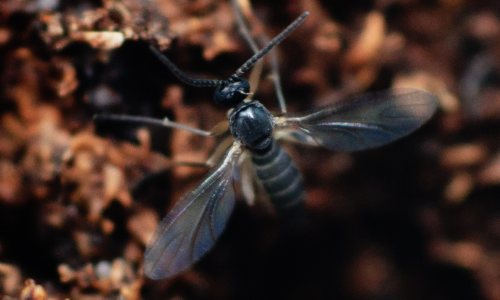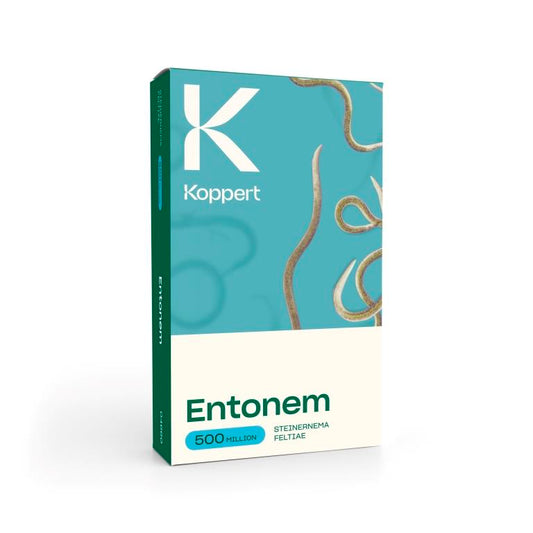
How to recognize fungus gnats
Fungus gnats, or soil flies, belong to a separate family (Sciaridae) inside the mosquito group. Fungus gnats are very common and sometimes become pests in young plants or mushroom growings. Adult fungus gnats usually stand out as ’dancing’ black flies hovering over the potting soil. Contaminations usually occur through fresh potting soil, which houses larvae or eggs. Fungus gnat larvae eat plant roots.
The different fungus gnat species are difficult to distinguish. Adult insects are 1-5 mm long, black-gray mosquitos with long legs. Fungus gnats have translucent wings with a characteristic U pattern. The larvae reach 5-12 mm in size and have a remarkable black head and no legs. Their body is white translucent. Pupae are 2-5 mm long and start white but turn yellow or brown.
Fungus gnat damage
Larvae of fungus gnats consume rotting plant material and roots of young plants. They prefer humid conditions and can cause large damage in plant nurseries. In addition, larvae can spread mites, nematodes, viruses and fungal spores which take advantage of the feeding damage to enter the plant. The death of (young) plants is usually very local, because larvae are not very mobile.
Onze producten tegen varenrouwmug
-
ENTONEM - 2500 M
-
ENTONEM - 500 M
-
ENTONEM - 50 M
Vendor:KoppertRegular price €34,00 EURRegular priceUnit price / per€34,00 EURSale price €34,00 EUR
-
Fungus gnat life cycle
life cycle 3-4 weeks, mostly underground
egg: 2-4 days
larval stage: 2-2.5 weeks
pupal stage: 3-4 days
adult stage: about 7 days -
Fungus gnat host plants
no preference for certain plant species
moist, humus-rich environment
for instance plant nurseries in greenhouses
-

Fungus gnat from above
-

Fungus gnat side view





